You get up in the morning and feel pain in your joints for about half an hour, especially in the knee joint and might think that you are just feeling lethargic from an increased load of work. After a routine visit from the doctor, it turns out that you are suffering from osteoarthritis and are referred to a physical therapist, where you’ll be guided on how to manage Osteoarthritis pain and how to decrease that pain with simple exercises.
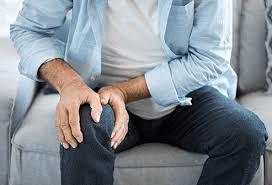
Osteoarthritis is a progressive degenerative condition that results from prolonged wear and tears in the joint. OA affects teens, adults and older people equally.
A spongy covering surrounds our bone called cartilage. It has worn out over the years due to progressive loading or overuse of the joint. Osteoarthritis is caused by a combination of genetic factors, overuse of joint or injury to the joint.
Physiologically, it is the imbalance between broken cartilage and chondrocytes responsible for repairing that cartilage. The degenerative condition occurs when the cartilage is being worn down faster than it could be repaired. The bare-bones are exposed, the space is narrowed down between the joints. The bony ends of bones rub against each other due to friction which in turn triggers pain.
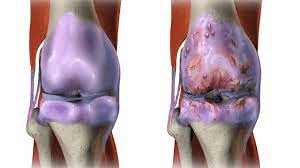
Risk factors include
There is no one scientifically proven cause of osteoarthritis. however, studies have shown that the majority of individuals affected with OA have the following common factors;
-
Obesity
-
Age
-
Occupation
-
Trauma, injury or fracture
-
Family history
-
Poor joint alignment and biomechanics
-
Inflexibility in muscles
-
Poor exercise techniques
Osteoarthritis is the 5th leading cause of disability globally, with women being affected twice as men. However, it affects people of all ages. It’s quite a misconception that only older individuals are more susceptible to osteoarthritis, although more prone to it. Osteoarthritis doesn’t spare young individuals. Any trauma or lifestyle affects the overall bone health.
Osteoarthritis affects joints that are used a lot in daily life, such as knees and hands. It affects other joints, too, which include;
-
Hip
-
Wrist/Hand
-
Back/ Neck
-
Foot/Ankle
-
Shoulder
-
Elbow
-
Jaw
It usually affects joints that bear most of our body weight, like the hip, knee and ankle. In comparison, the knee is the most common joint affected by osteoarthritis.
Symptoms of osteoarthritis
Osteoarthritis gets worse over time; it affects every individual differently. Some people complain of severe pain, but the x-ray shows only mild degeneration of the joint. On the other hand, some people complain of slight discomfort, but their joint is stiff and has moderate to severe deterioration in the joint.
However, patients complain of similar clinical signs and symptoms, such as;
-
On palpation, tenderness over and around joint
-
Creaking, clicking or grating sound from joint
-
Bony swelling
-
Excess synovial fluid leaking from joint spaces
-
Restrictive joint movement and range of motion
-
Unstable joint
-
Weakness of muscles surrounding the joint
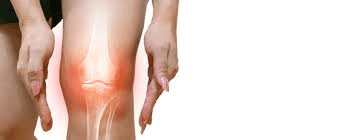
Living with osteoarthritis
Osteoarthritis impacts individuals emotionally, especially the young population who feel as if they can no longer fit in social groups they want to interact with. Continuous pain in joints affects day to day life of people affected by the disease. Although the onset of osteoarthritis is slow, it is progressive.
Personal life, family and occupation are affected more. Many individuals decrease mobility and movement, thinking that it will flare up the pain. It’s a myth! In Fact, exercise preserves your joint range of motion for a longer time. It tends to delay the progression of the disease.
People tend to use over the counter drugs like NSAIDs to get temporary relief from pain. Exercise combined with proper medication releases stiffness in joints and prevents swelling and inflammation. It eventually decreases pain sensation in joints.
Home use tips and tricks to reduce the pain
-
Use a hot pack when you feel stiffness in your joints; it shouldn’t be too warm to cause redness on the skin, known as erythema.
-
Use a cold pack to minimize swelling, inflammation and pain in joints.
-
If you are overweight and exceed your BMI score, try to reduce the weight. This, in turn, reduces stress on the knee joint.
-
Visit a Physical therapist and follow the exercise prescription provided by your therapist.
-
Strengthen up muscles around the knee joint to distribute the load on them
How to decrease That pain
It has been proven that exercise is the best non-pharmacological treatment for arthritis. Early mobility and a personalized exercise routine can prevent disability later in life. Here are some at-home exercise plans for your osteoarthritis.
However, always consult a Physical therapist to perform the exercise with proper intensity and frequency. Poor biomechanics while performing exercise may cause worse pain.
Isometric Quad set
-
Adapt a long sitting position
-
Place a foam roller or roll a towel and place it under your knee.
-
Press downward and squeeze with your knee on the towel
-
Pull your toes towards you
-
Repeat 10 times in 3 sets, hold for 3-5 seconds
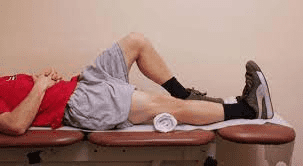
Heel slide
-
Lay down in supine position
-
Bend the unaffected knee
-
Straighten up your affected knee side
-
Then slowly bring the heel back and forth, sliding on the ground
-
Hold for 3-5 seconds and repeat ten times

Hamstring stretch
-
Put a chair in front of you or a stool in front of you
-
Keep your back straight
-
Put your affected leg on a chair
-
Bend your hips forward
-
Perform 10 repetitions in 3 sets
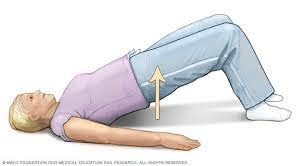
Straight leg raise
-
Lay down in supine position
-
Keep the unaffected leg bent
-
Straighten your unaffected leg
-
Then raise your leg towards the ceiling
-
Do not bend your leg while performing this exercise
-
Hold for 5 seconds
-
Repeat 10 times
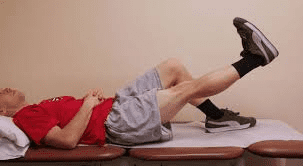
Hamstring curl
-
Lay down in prone position
-
Keep your legs in a straight position
-
Bend your leg as far as you can to touch your hips
-
Do it slowly hold for 5 seconds
-
Repeat 10 times
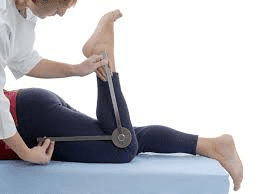
Isometric knee
-
Lay down in supine position
-
Bend both of your knees
-
Place a foam roller or cushion in between your legs
-
Press it with both of your knees and hold for 10 seconds
-
Repeat 10 times
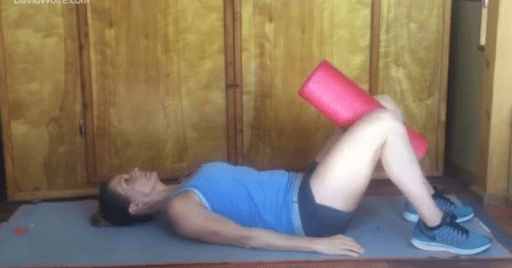
FAQs
I have got a family history of arthritis. Will I get arthritis later in life?
Arthritis has a genetic disposition. People who have a close family history of arthritis can get affected in their mid-40s. Engaging yourself in a good exercise routine and nutritious diet along with routine check-ups from your physician can help manage it early.
Osteoarthritis also results due to overuse of joints, so why is exercise important?
Exercise maintains a good homeostatic balance in cells and promotes the formation of proteoglycans in the cellular matrix. It aids in fast repairing or worn-out cartilage.
Takeaway
Osteoarthritis affects every age group. You might think you are too young and healthy for arthritis, but clinical results show that the degeneration in your joint has started. With arthritis pain doing simple house chores or climbing stairs could worsen the pain even more.
Joint stiffness prevents from getting up from a chair or standing for too long. People with osteoarthritis can continue their job, but some jobs are demanding, and it affects work overtime as it progresses
There is no proven way to treat osteoarthritis. It is a progressive condition, as the definition states. However, we can try our best to delay the condition’s progression by following an exercise plan guided by a Physical therapist.
